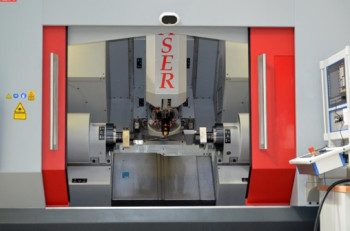Hybrid additive manufacturing (AM) has been gaining a lot of traction over the past four-to-five years, but it’s still a technology with a lot of unknowns.
First, hybrid manufacturing’s name is non-descriptive to the point of being enigmatic. But if we put it plainly, hybrid manufacturing is the combination of laser cladding and CNC milling within a single machine environment.
On the face of it, the dueling production techniques of additive and subtractive seem like they’d be difficult to mesh together, and, in some respects, they are. But if both additive and subtractive have been choreographed correctly, they offer powerful new capabilities to companies willing to understand these new manufacturing methods.
With that in mind, let’s take a look at why hybrid manufacturing has so much potential.
How Does Hybrid AM Work?
Hybrid manufacturing produces objects by employing both additive and subtractive technologies. Because of its dual nature, hybrid machines can begin producing a part by using either an additive or subtractive process. However, beginning production using additive manufacturing is inherently more efficient than needing to mill a form and, in most cases, will offer greater design freedom.
Hybrid systems use an additive production method called laser cladding. Laser cladding is essentially a precision welding process that deposits granular metals onto a surface where they are immediately liquefied into a melt pool by a high energy laser. Once cooled, the deposited metal becomes a solid.
To begin a new part, the hybrid build process employs its laser cladding system. Using g-code generated from CAD data, the cladding head creates a solid model by depositing and welding layers of metal powder to transform them into a unified solid structure. This process continues until an entire model has been built.
Once the cladding operations have concluded and the metal material has cooled, a hybrid system switches tooling methods and readies itself to begin CNC milling. Traditionally, hybrid systems come equipped with 5-axis milling tables to ensure that any additive surfaces can be machined, even if the part includes undercut regions. Similar to traditional milling machines, a hybrid machine can employ a number of tools to shape a surface and add critical features where needed.
After completion of the subtractive process, a part can either repeat the system’s additive/subtractive two-step in order to add new features, or it can be removed if it’s complete.
Read more at ENGINEERING.com


